Ticks are a common problem in dairy farming and can negatively impact animal welfare and milk production. Traditionally, farmers have used chemical pesticides and acaricides to control ticks. Still, these methods have drawbacks, such as environmental pollution and the potential for developing pesticide-resistant tick populations.
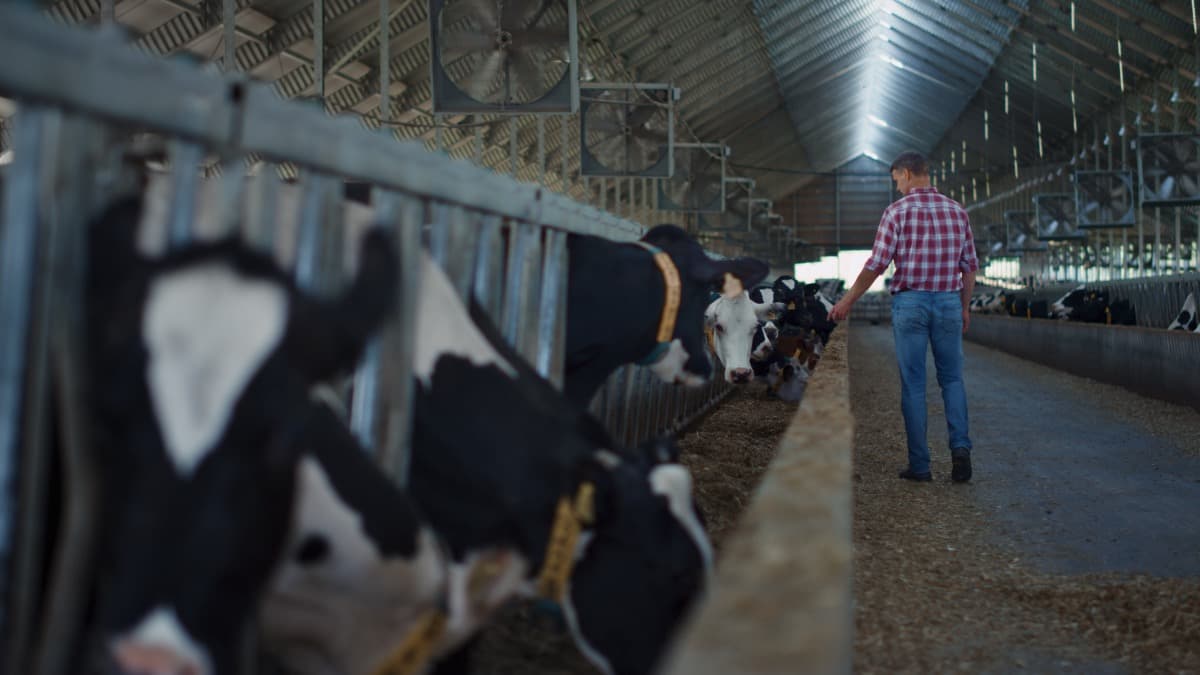
Therefore, sustainable and eco-friendly strategies for tick control are gaining popularity in dairy farming. These strategies involve a combination of environmental management practices, natural predators, biological control methods, integrated pest management, and alternative tick control methods. By adopting these strategies, dairy farmers can protect their animals and the environment while maintaining optimal milk production.
Tick Control in Dairy Farming
What is Dairy Farming?
Dairy farming is the agricultural practice of breeding and raising dairy cows or goats to produce milk. The milk can be sold or processed into dairy products such as milk, cheese, butter, yogurt, and ice cream. Dairy farming is an important industry worldwide and provides a source of income for many farmers. In 2020, global milk production was 852 million tonnes, with India being the leading producer, followed by the United States and China. Dairy farming practices vary depending on the region but typically provide animals with proper nutrition, housing, and medical care.
What is Tick Infestation?
Tick infestation refers to the presence of ticks on land-dwelling animals such as cattle, sheep, and other livestock. Ticks are arthropods that attach to the host animal and feed on their blood. While ticks are known for transmitting diseases, they can also cause direct harm to their hosts through bites, toxin release, and infestation.
In case you missed it: Management of Black Thrips in Chilli Peppers: Symptoms, Treatment, Chemical, Biological, Natural, and Organic Control
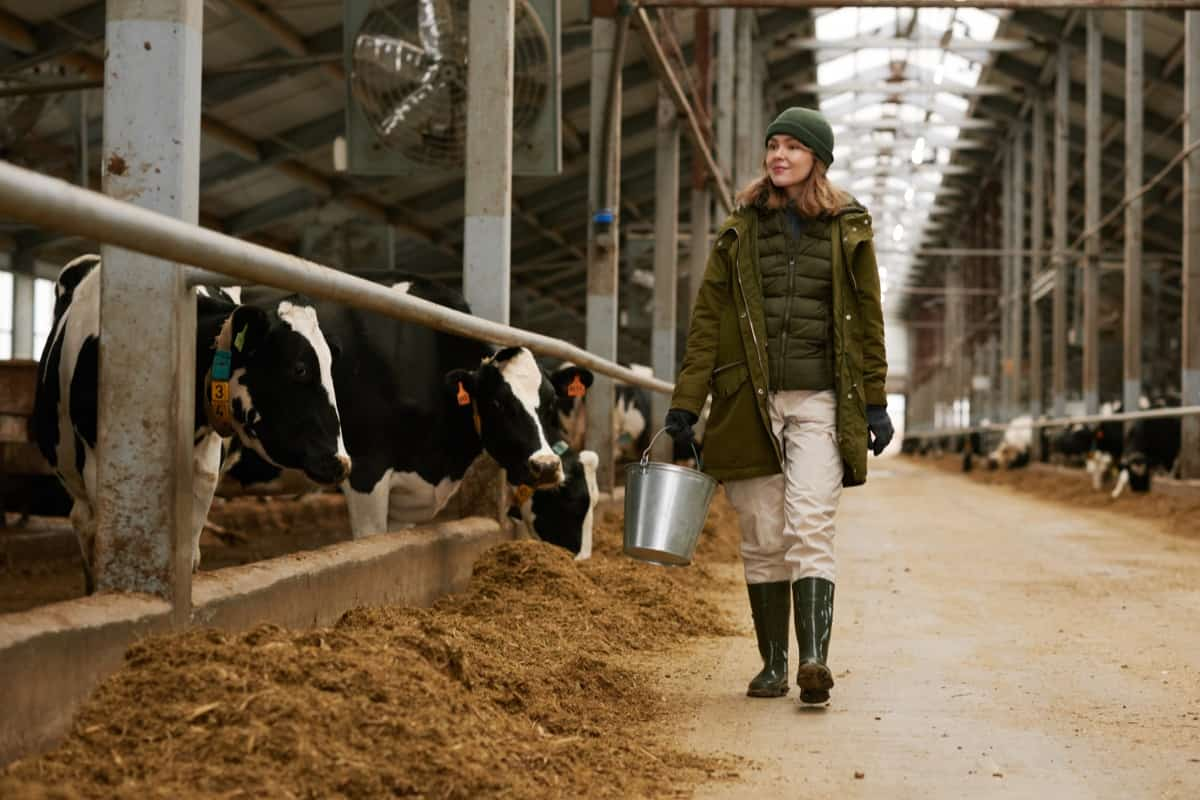
Infestation can lead to symptoms ranging from mild irritation to severe illness and even death. This is why tick control is important in dairy farming, as tick infestation can negatively impact animal welfare and milk production. Sustainable and eco-friendly strategies for tick control are becoming increasingly popular among dairy farmers to reduce the harm caused by tick infestations.
Ticks Infestation is Mostly Seen in Animals
- Ticks infestation is common in animals such as cattle, sheep, cow, and other livestock.
- Ticks attach to the host animal’s skin and feed on their blood.
- Ticks can cause direct harm to the host animal through bites, toxin release, and infestation.
- Infestation can lead to symptoms ranging from mild irritation severe illness, and even death.
- Tick control is important in dairy farming, as tick infestations can negatively impact animal welfare and milk production.
Understanding the Life Cycle of Ticks
Ticks undergo a complex life cycle consisting of four stages: egg, larvae, nymph, and adult. Ticks infesting cattle and buffaloes include Boophilus, Hyalomma, Rhipicephalus, and Amblyomma. Host-contact patterns of different tick species vary during their life cycles. Some ticks feed on one host individual for all developmental stages, while others use different individuals for each stage.
- Eggs: After a female tick has fed on a suitable host and mated with a male tick, she lays her eggs in a protected location.
- Larvae: These eggs hatch into six-legged larvae, searching for a host to attach to and feed on. Once connected, the larvae undergo several stages of molting to become nymphs.
- Nymph: Nymphs have eight legs and seek out a host to feed on, similar to larvae. After feeding, the nymphs undergo another molting stage to become adult ticks.
- Adult: Adult ticks are sexually mature and seek out a host for feeding and reproduction. In hard ticks, males and females feed and mate before the female lays eggs and dies. Soft ticks acquire smaller blood meals and lay eggs multiple times. The female dies after laying 2000-18000 eggs, while soft ticks lay eggs multiple times.
Identification and Symptoms of Tick Infestation in Dairy Animals
- Tick infestations can cause a range of health issues in dairy animals, including skin irritation, reduced milk production, anemia, weight loss, behavioral changes, and inflammation/infection.
- Dairy farmers need to be able to identify the signs of tick infestation and take appropriate measures to control it.
- Ticks are small, blood-sucking. They are usually visible to the naked eye and can be found attached to the animal’s skin.
- Ticks are generally dark brown or reddish-brown in color and can have a flat or rounded body, depending on the species.
In case you missed it: Stem Borer Management in Paddy Farming: Symptoms, Rice Damages, Natural, Organic, Chemical, and Biological Control
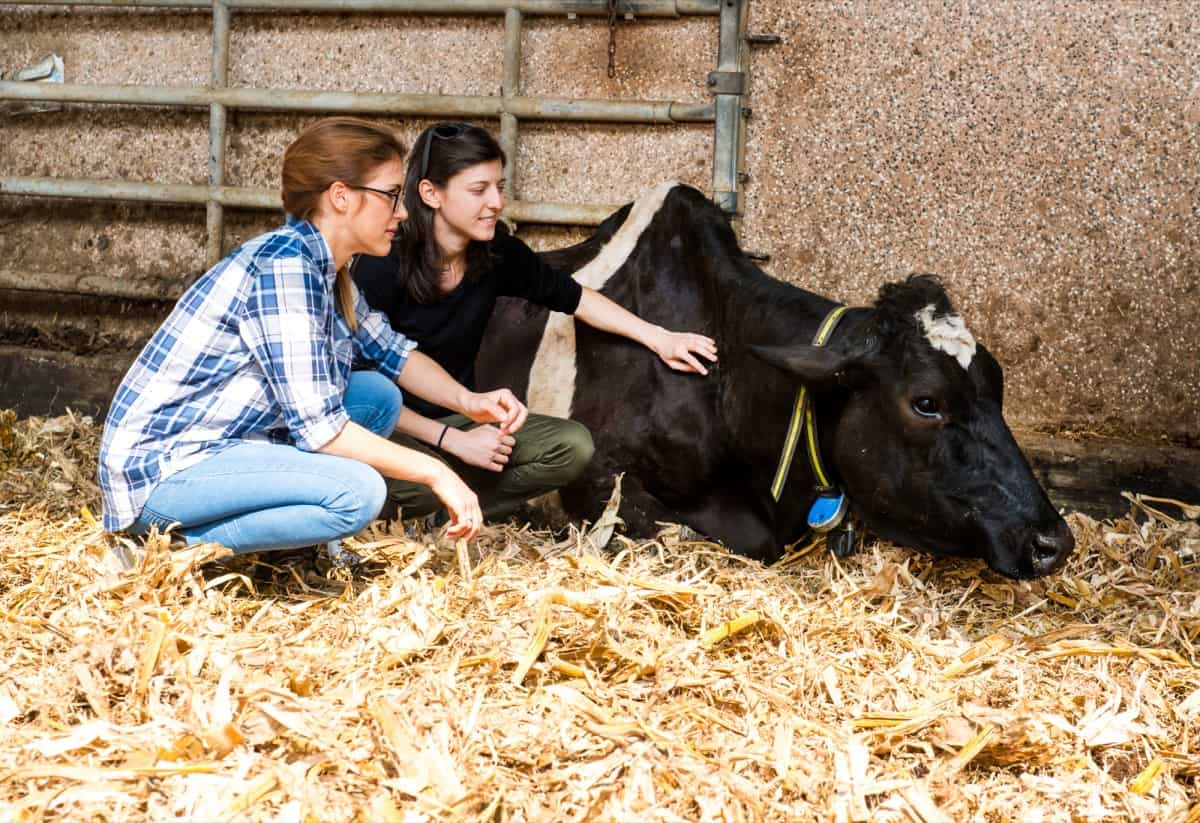
Effect of Ticks on Dairy Farming
Ticks are the most economically important cattle and other domestic species pests in tropical and sub-tropical countries. They are vectors of various pathogenic microorganisms such as protozoans, rickettsiae, viruses, bacteria, and spirochaetes, which cause diseases such as babesiosis, anaplasmosis, and Crimean-Congo Hemorrhagic Fever. Ticks are voracious bloodsuckers and can cause heavy infestation, leading to the impoverishment of hosts, retarded growth of young animals, and reduced milk production in dairy cows.
Environmental Management Strategies for Tick Control
Tick infestation can be a common problem for cattle and buffalo, especially for exotic and crossbred breeds. However, the tick burden on these animals can be effectively reduced by implementing environmental management strategies.
- Tick-proof housing: Animals should be housed in buildings with no cracks or crevices. Caulking walls can prevent ticks from hiding and breeding. An acaricide channel can also be used to encircle the entire building.
- Regular removal of breeding places: Regular removal of heaps of dung cakes and stacks of bricks, which can provide breeding places for ticks, can reduce tick infestation.
- Slow burning of farm waste: Slow burning of farm waste near the walls of unoccupied paddocks can effectively reduce the tick burden. However, caution should be exercised while implementing this practice.
- Separate housing for cattle and buffalo: Cattle are more susceptible to tick infestation than buffaloes, so they should be housed separately.
- Quarantine: Newly purchased animals should be quarantined and treated with acaricides to prevent the spread of ticks.
- Pasture spelling and rotational grazing: Pasture spelling and rotational grazing can be useful in reducing the population of one-host ixodid tick Boophilus microplus. However, it is not effective for controlling multi-host ixodid ticks such as Hyalomma anatolicum anatolicum and argasid ticks.
- Manual removal of ticks: Manual removal is a simple solution, but it should be done with caution to avoid transmitting diseases to humans. The most important and deadly human pathogen recognized is the Crimean-Congo Hemorrhagic Fever (CCHF) virus, usually associated with ticks of the genus Hyalomma.
In case you missed it: How to Get Rid of Fruit Fly in Vegetables: Symptoms, Treatment, Management, Chemical, and Organic Control
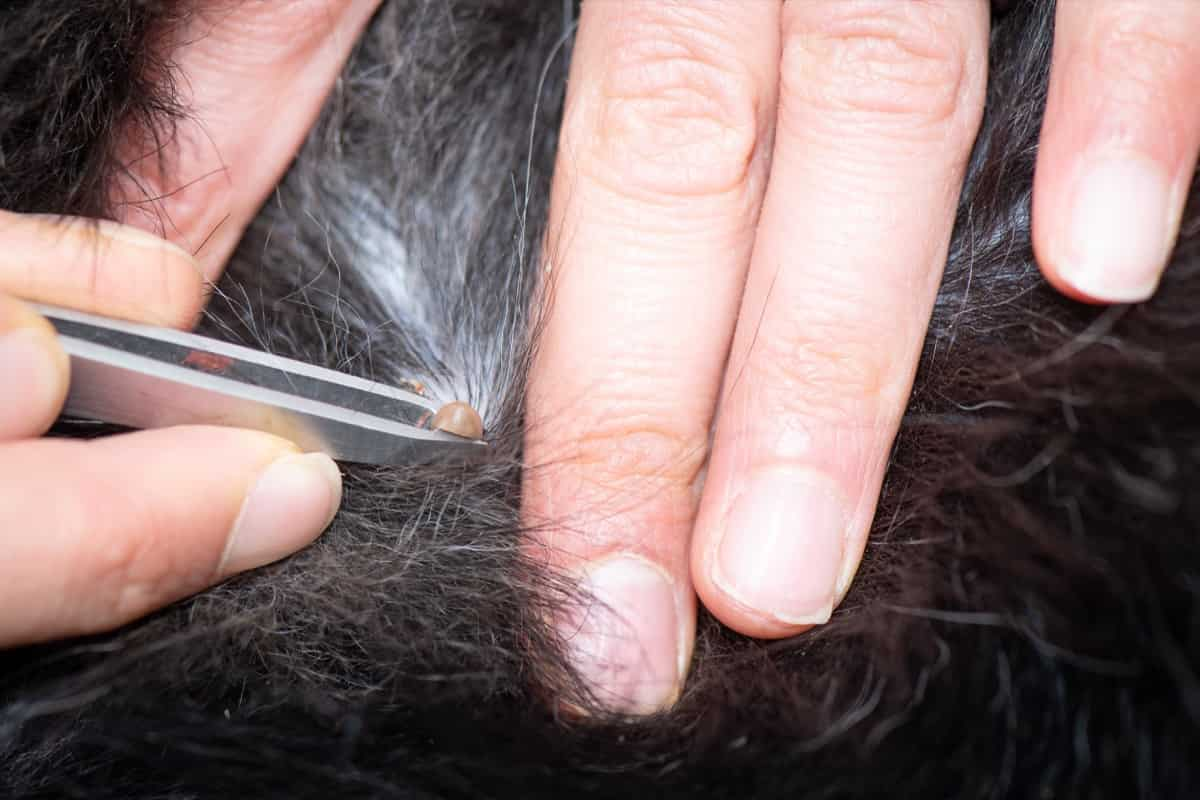
Natural Predators and Biological Control Strategies for Tick Control in Dairy Farming
Tick control is essential for dairy farming, as these parasites can cause economic losses and transmit diseases. Biological control strategies have been developed to control tick populations through natural predators and genetic selection.
- Natural Predators: Various animals such as birds, rodents, shrews, ants, and spiders play a role in tick control by preying on them. Some birds, such as oxpeckers, eat ticks from the bodies of infested animals, reducing the tick burden. Raising poultry chicks in cattle barns also greatly reduces the tick burden on infested cattle, as the chicks pick ticks from the bodies of cattle and ticks moving in barns. In some areas, fire ants are noteworthy tick predators.
- Entomopathogenic fungi: Metarhizium anisopliae and Beauveria bassiana, used to control ticks, are promising fungi for tick biocontrol, with commercial strains already available for crop pests.
- Entomopathogenic nematodes: Steinernematidae and Heterorhabditidae families of nematodes are insect-killing agents that can infect and kill ticks, with up to 165 nematodes required to kill a single tick.
- Tick-resistant cattle breeds: Breeding cattle lines or breeds with enhanced genetically based resistance is a promising option. Zebu and Sanga cattle breeds are naturally resistant to ticks, whereas European species are more susceptible. Sahiwal cattle, a breed of Zebu cattle, has been introduced to Australia for tick control, leading to successful outcomes. Resistance to ticks is heritable, and breeding from cows and bulls selected for resistance can increase tick resistance in the herd.
Methods of Tick Control Strategies in Dairy Farming
Tick infestation is a major problem for dairy farmers, as it can cause parasitic diseases and decrease animal productivity. Chemical control methods are commonly used, but they are not effective in controlling ticks in hiding places, such as cracks and crevices in animal sheds. Here are some effective tick control strategies that dairy farmers can use:
- Clean the animal shed and its surroundings before implementing tick control strategies. Remove any waste or stubble that may act as hiding grounds for ticks.
- Remove or plaster the cracks and crevices in the walls of the animal shed to eliminate hiding places for ticks.
- Remove weeds and stubble 15 to 20 feet around the animal shed to minimize tick habitats.
- Use a flame gun to burn the walls and hide places of ticks, taking appropriate safety precautions.
- Apply recommended insecticides under the supervision of a veterinarian to the body of animals and the animal shed on the same day.
- For severe tick infestation, spray regularly every 15 to 29 days until the tick infestation is under control. Then, do these management practices at regular intervals of 3-4 months, especially before the monsoon season and after September (initiation of the winter season).
- Acaricides are the most common method of tick control in dairy farming, used through various modes like dipping, washing, spraying, and more. Insecticide ear tags can also be used.
- Several chemical insecticides are available for tick control, including Butox, Ektomin, Clinar, Tik Kill, Taktik, and Cythion.
In case you missed it: Key Rules to Get Rid of Fruit Fly in Mango: Symptoms, How to Treat, Management, Chemical, and Organic Control
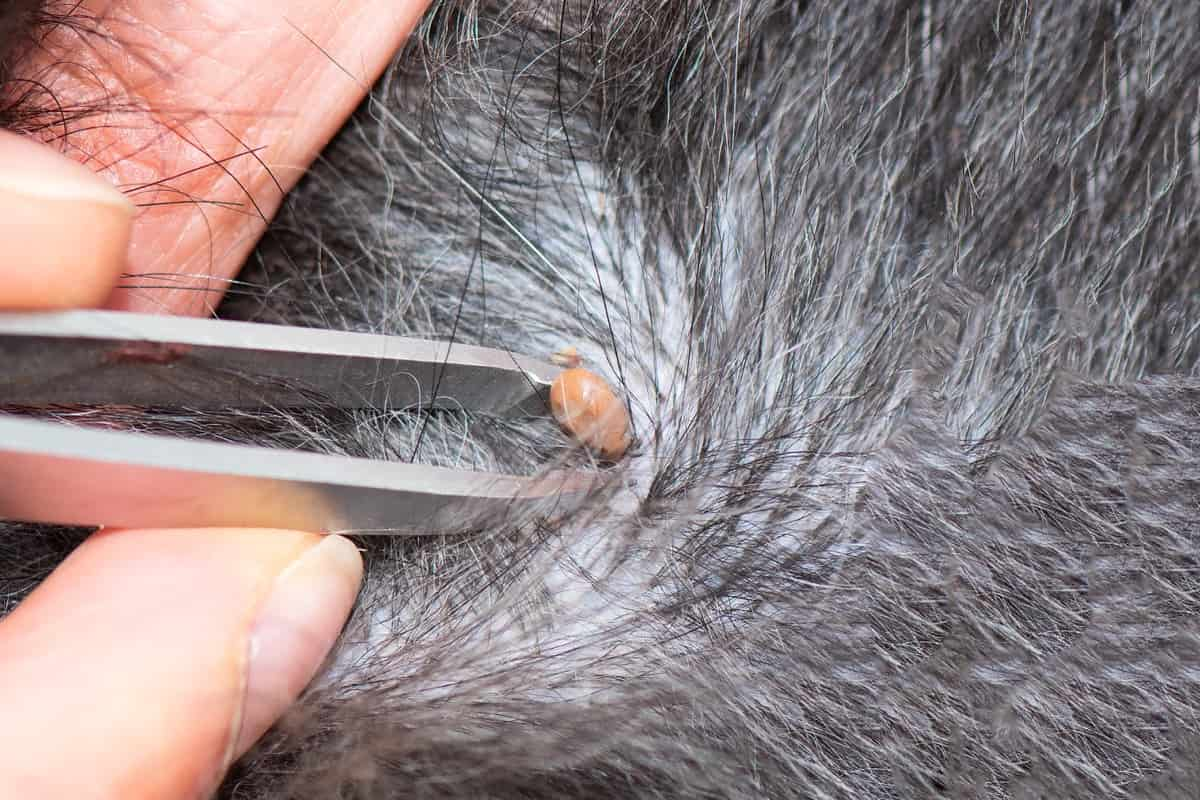
Sustainable and Eco-friendly Strategies for Tick Control by Integrated Pest Management (IPM)
Ticks are a major problem in livestock management, particularly among small and marginal farmers in India. The most common method of tick control is the periodic application of chemical acaricides, but the widespread resistance to these chemicals and their potential environmental hazards have led to concerns. Moreover, newer classes of acaricides tend to be more expensive.
Integrated Pest Management (IPM) is a sustainable and eco-friendly approach to tick control that combines various complementary control measures. This strategy aims to make the best use of each measure without relying too heavily on any single component. Some of the eco-friendly and sustainable methods of tick control that can be used in an integrated approach are:
- Biological control involves using natural enemies such as predators, parasites, and pathogens to control tick populations. For instance, certain species of birds, insects, and nematodes feed on ticks.
- Cultural control: This involves using management practices such as pasture rotation, weed control, and proper grazing management to reduce tick populations.
- Physical control involves using physical barriers such as fencing, traps, and vacuuming to reduce tick populations.
- Herbal preparations: Herbal preparations have been gaining popularity among rural folks due to their strong belief in their efficacy. The use of plant extracts such as neem, eucalyptus, and lemongrass has been found to have acaricidal properties and can be used as an alternative to chemical acaricides.
IPM strategies offer a promising alternative to chemical-based tick control methods. By combining various control measures, farmers can reduce the reliance on chemical acaricides and promote more sustainable and eco-friendly tick control practices.
Prevention of Tick Control in Dairy Farming
- Tick infestation can cause significant economic losses in dairy farming, with the worldwide cost of controlling tick levels and tick-borne diseases estimated to be around 13.9 to 18.7 million US dollars.
- Pesticides or acaricides are commonly used against ticks, but they are toxic, expensive, and increasingly ineffective due to tick resistance.
- Vaccination is a promising alternative to acaricides for preventing tick infestation, as it is less expensive, less harmful to the environment, and more effective.
- The CDC approved a human vaccine for tick-borne encephalitis in 2021, a significant development in tick-borne disease prevention.
- Preventive measures for avoiding tick infestation include avoiding tick-prone areas, wearing protective clothing that covers exposed skin, and performing thorough skin checks after potential tick encounters.
- Removing ticks from the skin immediately and preserving them in alcohol for identification purposes is also recommended.
- A combination of preventive measures and sustainable tick control methods can help dairy farmers protect their livestock from tick infestation, reduce economic losses, and ensure the production of high-quality milk.
In case you missed it: How to Control Aphids on Roses: Home Remedies, Naturally, Organic and Chemical Management

Conclusion
Sustainable and eco-friendly strategies for tick control in dairy farming are crucial for reducing economic losses and ensuring high-quality milk production. Combining preventive strategies and integrated pest management methods can help achieve this goal while minimizing the negative environmental and animal health effects.
- Types of Pesticides Used in Agriculture: A Beginner’s Guide
- Economical Aquaculture: A Guide to Low-Budget Fish Farming
- 15 Common Planting Errors That Can Doom Your Fruit Trees
- How to Make Houseplants Bushy: Effective Tips and Ideas
- Innovative Strategies for Boosting Coconut Pollination and Yield
- Pollination Strategies for Maximum Pumpkin Yield
- The Complete Guide to Chicken Fattening: Strategies for Maximum Growth
- Natural Solutions for Tulip Problems: 100% Effective Remedies for Leaf and Bulb-Related Issues
- Revolutionizing Citrus Preservation: Towards a Healthier, Greener Future
- Natural Solutions for Peony Leaf and Flower Problems: 100% Effective Remedies
- Maximizing Profits with Avocado Contract Farming in India: A Comprehensive Guide
- Natural Solutions for Hydrangea Problems: 100% Effective Remedies for Leaf and Flowers
- The Ultimate Guide to Choosing the Perfect Foliage Friend: Bringing Life Indoors
- From Sunlight to Sustainability: 15 Ways to Use Solar Technology in Agriculture
- The Ultimate Guide to Dong Tao Chicken: Exploring from History to Raising
- The Eco-Friendly Makeover: How to Convert Your Unused Swimming Pool into a Fish Pond
- Mastering the Art of Delaware Chicken Farming: Essentials for Healthy Backyard Flocks
- 20 Best Homemade Fertilizers for Money Plant: DIY Recipes and Application Methods
- How to Craft a Comprehensive Free-Range Chicken Farming Business Plan
- Brighten Your Flock: Raising Easter Egger Chickens for Beauty and Bounty
- How to Optimize Your Poultry Egg Farm Business Plan with These Strategies
- Subsidy for Spirulina Cultivation: How Indian Government Schemes Encouraging Spirulina Farmers
- Ultimate Guide to Raising Dominique Chickens: Breeding, Feeding, Egg-Production, and Care
- Mastering the Art of Raising Jersey Giant Chickens: Care, Feeding, and More
- Ultimate Guide to Raising Legbar Chickens: Breeding, Farming Practices, Diet, Egg-Production
- How to Raise Welsummer Chickens: A Comprehensive Guide for Beginners
- How to Protect Indoor Plants in Winter: A Comprehensive Guide
- Ultimate Guide to Grow Bag Gardening: Tips, Tricks, and Planting Ideas for Urban Gardeners
- Guide to Lotus Cultivation: How to Propagate, Plant, Grow, Care, Cost, and Profit
- Agriculture Drone Subsidy Scheme: Government Kisan Subsidy, License, and How to Apply Online
- Ultimate Guide to Raising Araucana Chickens: Breed Profile, Farming Economics, Diet, and Care
- Bringing Hydroponics to Classroom: Importance, Benefits of Learning for School Students
- Ultimate Guide to Raising Polish Chickens: Breed Profile, Farming Economics, Diet, and Care
- Ultimate Guide to Raising Australorp Chickens: Profile, Farming Economics, Egg Production, Diet, and Care
- Silkie Chicken Farming: Raising Practices, Varieties, Egg Production, Diet, and Care
- Sussex Chicken Farming: Raising Practices, Varieties, Egg Production, Diet and Care